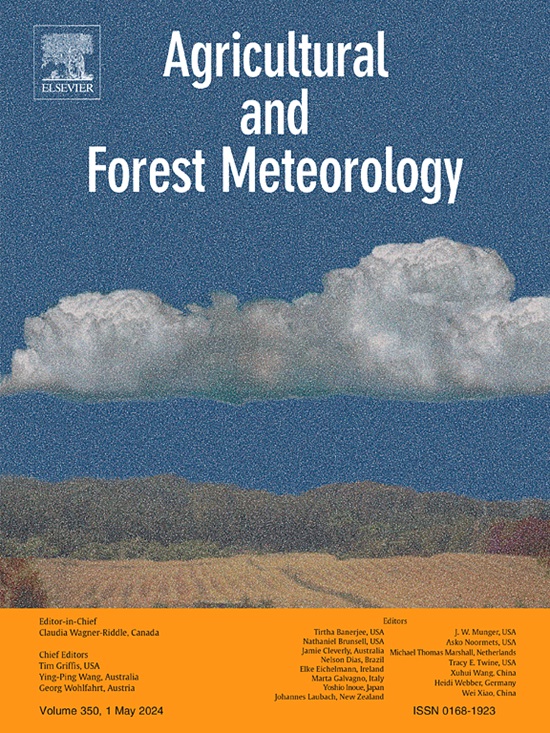树木水分利用抗旱能力的多生物群系评价
IF 5.7
1区 农林科学
Q1 AGRONOMY
引用次数: 0
摘要
在许多地区,干旱的频率和严重程度正在增加,影响森林功能和动态,其影响可能导致广泛的树木死亡和生态系统转移。这些事件与土壤和大气水文变化有关,但在全球尺度上,对树木用水不同反应的原因了解甚少。我们使用SAPFLUXNET全球数据库的数据来评估>;900棵树,96种不同的树种,分布在全球89块土地上。我们发现,当土壤水分有效性在干旱之前、期间或之后较低时,水利用弹性会下降。大气干旱增强了干旱前的恢复力,但减弱了干旱后的恢复力。自上次干旱以来较长的恢复期以及直径较大的树木也有利于恢复力。水力和水分关系性状也在决定树种间水分利用弹性的差异中发挥了作用。更容易受到茎木质部栓塞(负P50较小)或具有更负膨胀损失点的物种表现出更高的水分利用弹性(和抵抗力)。我们的发现有助于更好地理解水利用弹性的驱动因素,从而有助于我们理解树木如何在多个时空尺度上应对严重干旱。本文章由计算机程序翻译,如有差异,请以英文原文为准。
Multi-biome assessment of tree water use resilience to drought
Drought frequency and severity are increasing in many regions, impacting forest functioning and dynamics, with effects that can result in widespread tree death and ecosystem shifts. These events have been linked to soil and atmospheric hydrological changes, but the causes of different responses in tree water-use are poorly understood at the global scale. We used data from the SAPFLUXNET global database to assess water-use resilience to drought of > 900 trees of 96 different species in 89 plots distributed across the globe. We detected decreases in water-use resilience when soil water availability was lower before, during or after the drought. Atmospheric drought enhanced resilience during the pre-drought period, but diminished it post-drought. Resilience was also favoured by longer recovery periods since the last, previous drought, and in larger diameter trees. Hydraulic and water relations traits also played a role in determining differences in tree water-use resilience across species. Species that were more vulnerable to stem xylem embolism (less negative P50) or had a more negative turgor loss point exhibited higher water-use resilience (and resistance). Our findings help to better understand the drivers of water use resilience and therefore contribute to our understanding of how trees respond to severe droughts at multiple spatio-temporal scales.
求助全文
通过发布文献求助,成功后即可免费获取论文全文。
去求助
来源期刊
CiteScore
10.30
自引率
9.70%
发文量
415
审稿时长
69 days
期刊介绍:
Agricultural and Forest Meteorology is an international journal for the publication of original articles and reviews on the inter-relationship between meteorology, agriculture, forestry, and natural ecosystems. Emphasis is on basic and applied scientific research relevant to practical problems in the field of plant and soil sciences, ecology and biogeochemistry as affected by weather as well as climate variability and change. Theoretical models should be tested against experimental data. Articles must appeal to an international audience. Special issues devoted to single topics are also published.
Typical topics include canopy micrometeorology (e.g. canopy radiation transfer, turbulence near the ground, evapotranspiration, energy balance, fluxes of trace gases), micrometeorological instrumentation (e.g., sensors for trace gases, flux measurement instruments, radiation measurement techniques), aerobiology (e.g. the dispersion of pollen, spores, insects and pesticides), biometeorology (e.g. the effect of weather and climate on plant distribution, crop yield, water-use efficiency, and plant phenology), forest-fire/weather interactions, and feedbacks from vegetation to weather and the climate system.

 求助内容:
求助内容: 应助结果提醒方式:
应助结果提醒方式:


